THYMOPHYLLA
Thymophylla
Lag., Gen. Sp. Pl. 25. 1816; Strother, Fl. North Amer. @ eFlora.org 21: 239.
Annual, perennial, subshrubs or shrubs, 5-30 cm. Stems erect to spreading to decumbent, branched from bases or throughout. Leaves cauline, opposite or alternate; petiolate or sessile; leaf blades often pinnately lobed, blades or lobes spatulate to linear or filiform, ultimate margins entire or toothed, faces glabrous or arachnose, canescent, floccose, lanate, puberulent or tomentose (bases little, if at all, bristly-ciliate), oil-glands scattered in laminae or submarginal. Capitula usually radiate, sometimes discoid or radiant, borne singly. Calyculi 0 or 1-8, deltate to linear bractlets (bearing oil-glands). Involucres campanulate to obconic, 2-7 mm diameter. Phyllaries 8-13(-22) in +/-2 series (strongly connate 2/3 - 7/8+ their lengths, seldom with outer margins free more than 1/2 their lengths, usually bearing oil- glands, persistent. Receptacles convex, smooth or +/- pitted, epaleate. Ray florets: Usually 5,8,13 or 21, pistillate, fertile. Corolla usually yellow to orange, rarely white. Disc florets: 16-100+, bisexual, fertile. Corolla yellow to orange, tube shorter than +/- cylindric throat; lobes 5, deltate. Cypselae obpyramidal, obconic or cylindro-clavate, glabrous or sparsely strigillose. Pappi persistent, coroniform or of 10(-20) free scales (each scale erose or 1-5 aristate, or a fascicle of 5-9 basally connate bristles).
Species 13
Thymophylla tenuiloba
Thymophylla tenuiloba
(DC.) Small, Fl. S.E. U.S. 1295, 1341. 1903; Strother, Fl. North Amer. @ eFloras.org 21: 242; Dyssodia tenuiloba (DC.) B. L. Robinson, Proc. Amer. Acad. arts 49: 508. 1913; Hymenantherum tenuilobum DC., Prodr. 5: 642. 1836.
Annual herbs, green, 15-30 cm tall, sparsely hirtellous. Stem erect to decumbent, spreading, branched from bases or throughout, branches flexuous ending in floral heads. Leaves mostly alternate, sometimes opposite on proximal nodes, nearly sessile, 12-20 mm overall, leaves imparipinnately lobed, lobes 7-15, 1-10 mm long, linear to filiform, pliable, margins entire (sometimes with 1-2 lobules), glabrate, apex mucronate, margin of lobes and rachis with orange-coloured marginal glands. Capitula radiate, yellow, ca. 1.5 cm across, borne singly on peduncles terminally on branches arranged in corymbose fashion; peduncle 30-80 mm long, glabrous, with distantly arranged 2-5 scale-like bracts, ca. 2-3 mm long. Calyculi of 3-8 lanceolate to subulate bractlets, much shorter than involucre. Involucre obconic, 5-7 mm long, with orange-coloured glands in upper half region, persistent. Phyllaries 12-21, in 1-series, strongly connate ca. 7/8 their length, free parts (lobes) ca. 0.5 mm long, ovate-deltate; involucre with orange-coloured glands in upper half region. Receptacle convex, epaleate. Ray florets: Pistillate, fertile, nearly equal to number of involucral bracts (Phyllaries) and opposite to them, 12-22. Corolla bright yellow; tube ca. 3 mm long, narrowly cylindrical, glabrous; limb 6.5-8 mm x ca. 3 mm, +/- obovate-oblong, spreading, apex 3-lobed. Disc florets: 50-100+, bisexual, fertile, yellow, ca. 8 mm long. Corolla yellow, 3-5 mm long; tube equal to +/- tubular-funnelform throats; lobes 5, +/- 1 mm long, ovate, acute. Anthers ca. 1 mm long. Ovary terete, ca. 3 mm long, strigillose; style ca. 4 mm ling, bifid, branches linear-oblong, apex hairy. Cypselae +/- 3 mm long, oblong-obconic, sparsely strigillose, black. Pappi persistent, coroniform, 7-8, each scale with a fascicle of 5-9 basally connate bristles, ca. 3 mm long.
Common Names: Bristle leaf, Prickly leaf, Dahlberg Daisy, Golden Fleece, Shooting Star, Small Bristle leaf
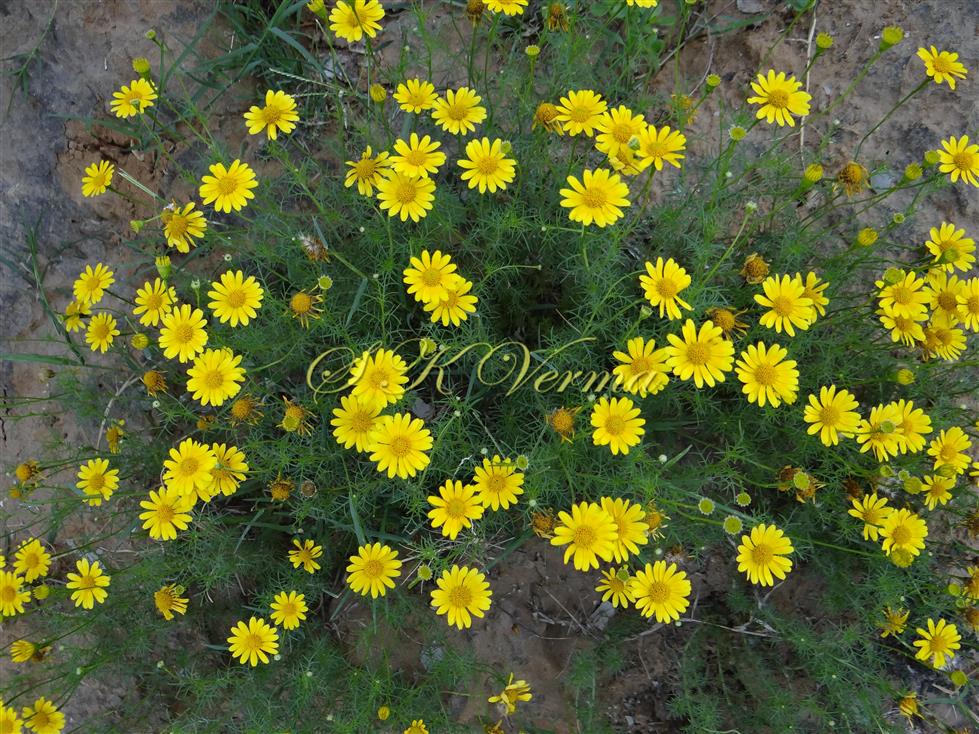
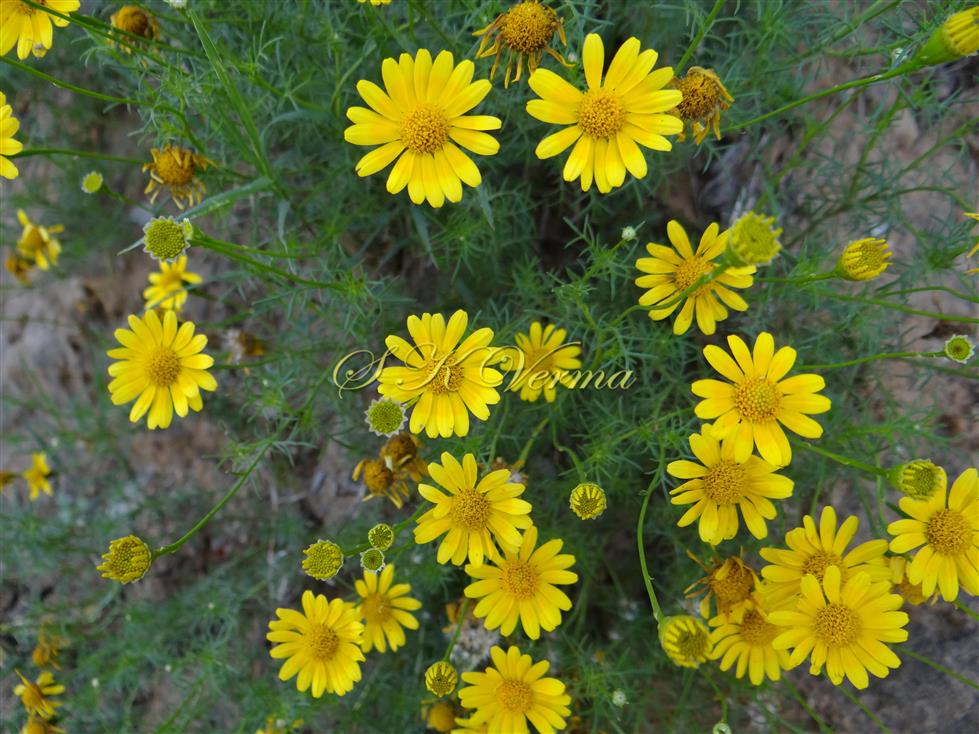
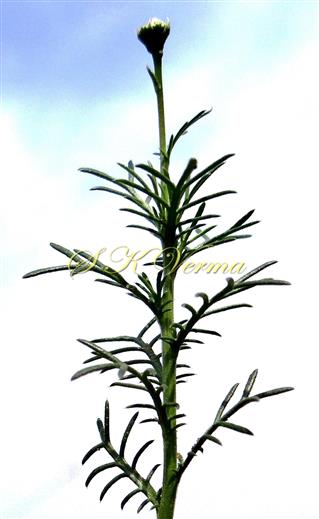


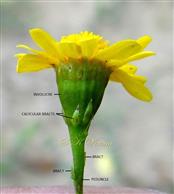
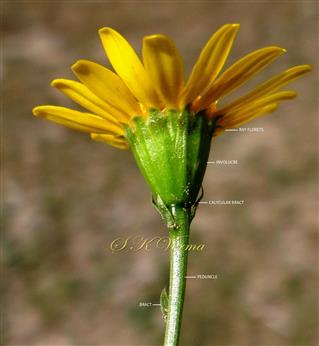

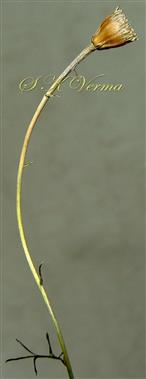
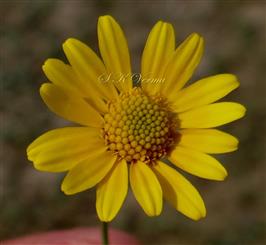
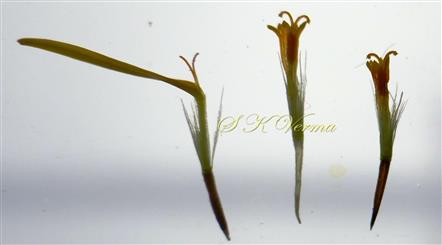
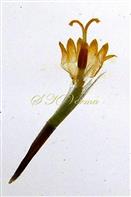
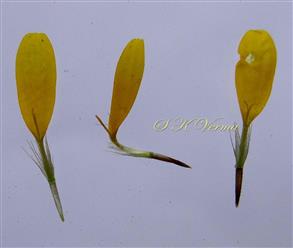
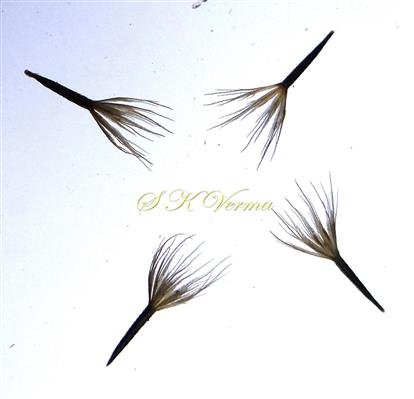
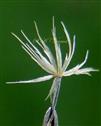
-DSC02123A.jpg)








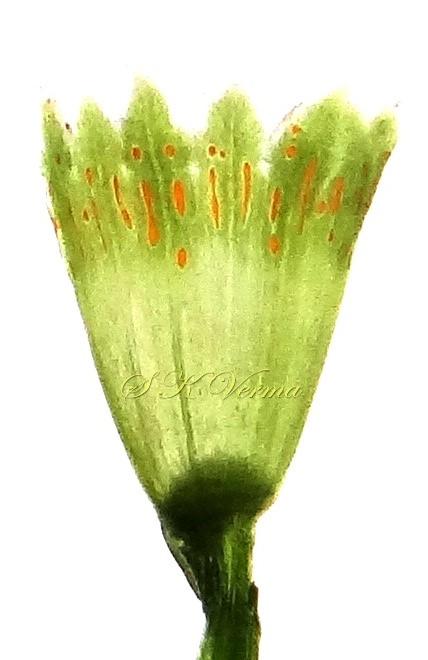







-DSC02123A.jpg)